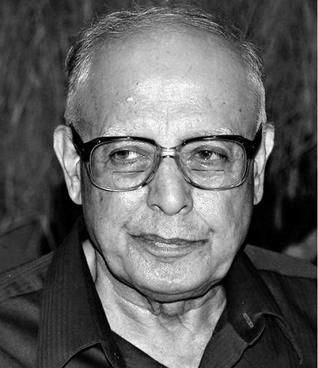Alipura Village (near Gauribidanaur &, Bengaluru, KARNATAKA :
It was the most uplifting experience of their lives. Two young Muslim couples from Alipura village near Gauribidanur in Karnataka got married in a helicopter yesterday, thereby creating a first of sorts. “It was a combination of the two best experiences of my life: getting married and flying in the air,” said Zameen Abbas, one of the two bridegrooms, after he returned to the ground. The two teenage brides had to content themselves with just watching the whole show from terra firma.
Alipura is actually a small village with a large Muslim population. Most of its residents had never even seen a flying vehicle of any kind, even at election time when politicians like S Bangarappa zip around merrily in choppers. So the drama unfolding before their eyes brought out a record turnout from all the surrounding areas, and gave captain Jayanth Pooviah a few unpleasant moments as he tried to navigate around spectators.
The whole project was thought up by Abbas’s elder brother Kareem, a chilly wholesaler of Alipura. Kareem’s grandfather had had an elephant brought into Alipura for his wedding half a century ago, and had been known ever since as ‘Aane Sahibru’ (lord of the elephants.)
The story goes, in the village, that so many other young bridegrooms demanded the same pachyderm procession for their weddings that the original elephant, which Kareem’s grandfather had brought from Mysore, permanently made its home in Alipura!
Kareem himself had an elephant procession to mark his marriage some time ago. However, he decided that it was time his family created history again, and so he came up with this novel idea to mark the joint celebration of the marriages of his brother and sister. He approached Deccan Aviation, an aircraft charter firm in Bangalore that frequently advertises its availability for offbeat uses of this kind.
“When he first came to me some months ago, I thought that he was playing a practical joke on me,” says Vijay Athreye, general manager of Deccan Aviation. “Still, I told him to pick a Sunday as we are a little freer on that day and could offer him a better price. Sure enough, he came back a fortnight ago with a serious offer and the marriage date of December 13. Our rate per hour is over Rs 50,000. But when we realised that he genuinely could not afford that price, we cut our rates down by almost half.”
Kareem finally got himself a deal at Rs 30,000 for what took almost two hours. He was to report at the Jakkur helipad of Deccan Aviation before 1500 hours on Sunday, December 13, ready for take-off.
The aviation company promptly informed the local media, and even asked Kareem to accommodate a couple of television reporters on the helicopter, which was to fly almost empty to Alipura. An excited Kareem, turned out neatly in a shiny, new suit, clutching a plastic bag full of jasmines in his sweating hands, agreed readily.
A representative of the aviation company went to Alipura a few days earlier, marked out space for a helipad and had the area cleared by enthusiastic villagers. The local police were also informed, and asked to cordon off the helipad. As the chopper descended, Kareem scattered jasmines over the heads of the waiting marriage party and spectators. The helicopter came down with aplomb and was examined carefully by waiting villagers for a half hour as its engine had to cool off before the next flight. Rest time over, the maulvis, the two bridegrooms the fathers of the brides all crowded into the aircraft and took off into the air.
Pooviah circled the village carefully, in full view of the assembly, as the maulvis recited their prayers and conducted the wedding ceremony. “I could not really see what they were doing as I was too busy flying carefully,” he said later, talking to Rediff On The NeT. “I have flown a birthday party in the air some months ago, but this ceremony was so fascinating that it really took the cake!”
Wedding over, he circled the village a little more to allow the bridal party to enjoy the scenery and then brought them back to earth.
A grand wedding spread of biryani and sweets followed. “I have never seen anything like this,” remarked Abdul J, an elderly bystander. “How much did it all cost? Kareem told us that it was almost Rs 100,000.” Added another spectator: “Some more of us might like to repeat this exercise for weddings in our family, you see…”
A stony-faced Pooviah, who had already been sworn to secrecy by Kareem, made some non-committal noises. The women in purdah,who were clustered in a group nearby, took in the unfolding drama from a discreet distance, and the two brides refused to face the television cameras without their veils. The stuttering bridegrooms gasped out a few excited reactions. And then it was time to leave, at least for the two newly married couples and the helicopter.
The ecstatic couples boarded the craft along with aviation company Managing Director C R Gopinath and Pooviah. As they took the half hour trip back to Bangalore, Gopinath urged the veiled brides to look out of the chopper and see the passing scenery, a suggestion that they accepted with alacrity. It was over all too soon for them.
Pooviah gave them a further small aerial tour of the parts of the city close to Jakkur and then returned to his helipad. The young couples alighted quickly and were whisked into a waiting car, which took them off to spend their wedding night in a five-star hotel. However, when this Rediff On The NeT tried to contact them at the hotel later in the evening for a more leisurely chat, the hotel staff said that no such couples were registered with them!
Gopinath and Pooviah sat back in their comfortable office, sipping cups of hot sweet tea to make up for the wedding repast that they had had to forego, and talking to returning journalists, most of whom took local buses back to Bangalore.
The words of the modest, simply dressed Kareem, spoken a few hours earlier, still hung in the air. “Why should only the affluent jetsetters have experiences like this?” he had asked. “Ordinary people like us should also prove that it is possible for us to make our dreams come true.”
source: http://www.rediff.com / rediff.com / Home> News> Report / by M D Ritti – Bangalore / December 14th, 1998













